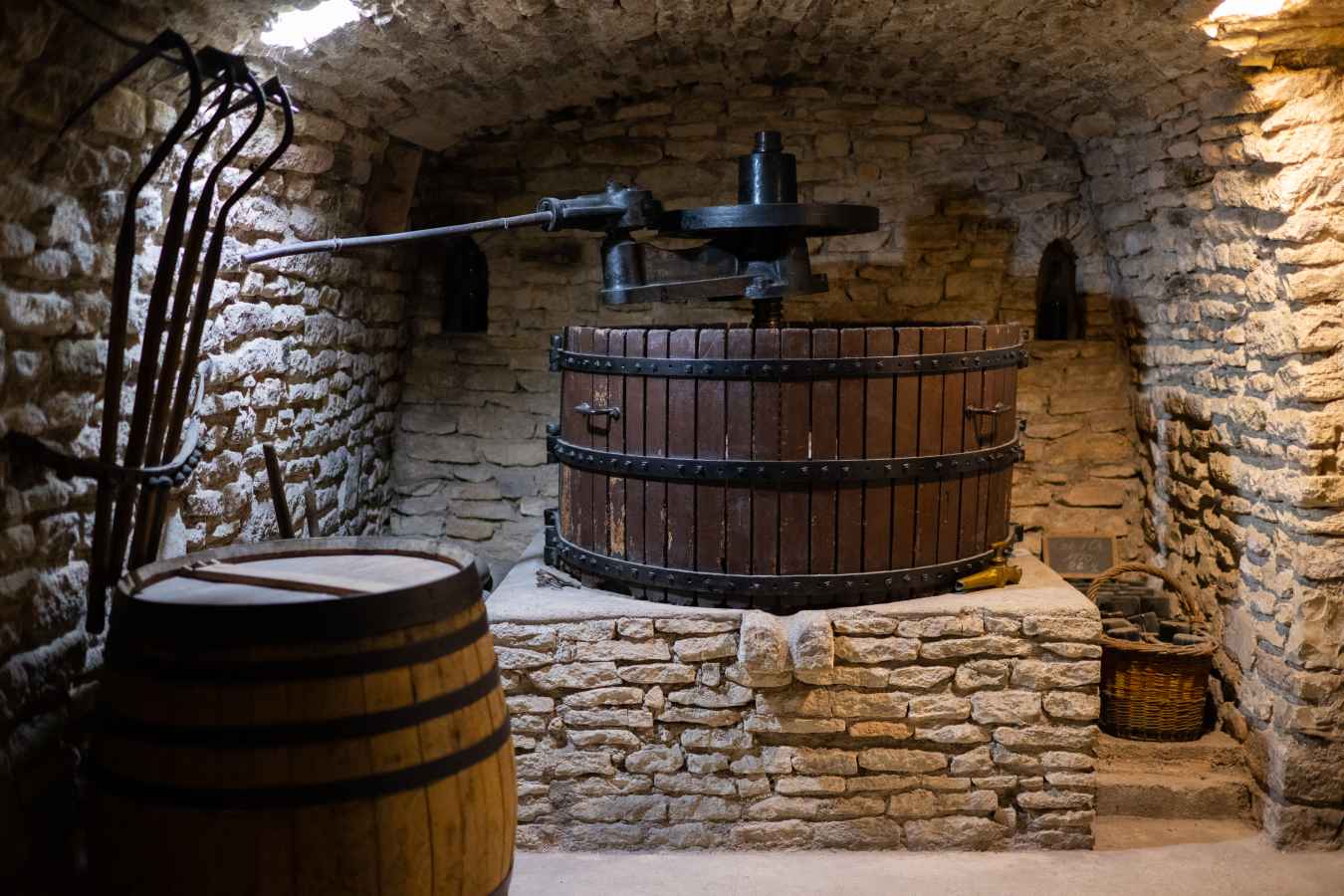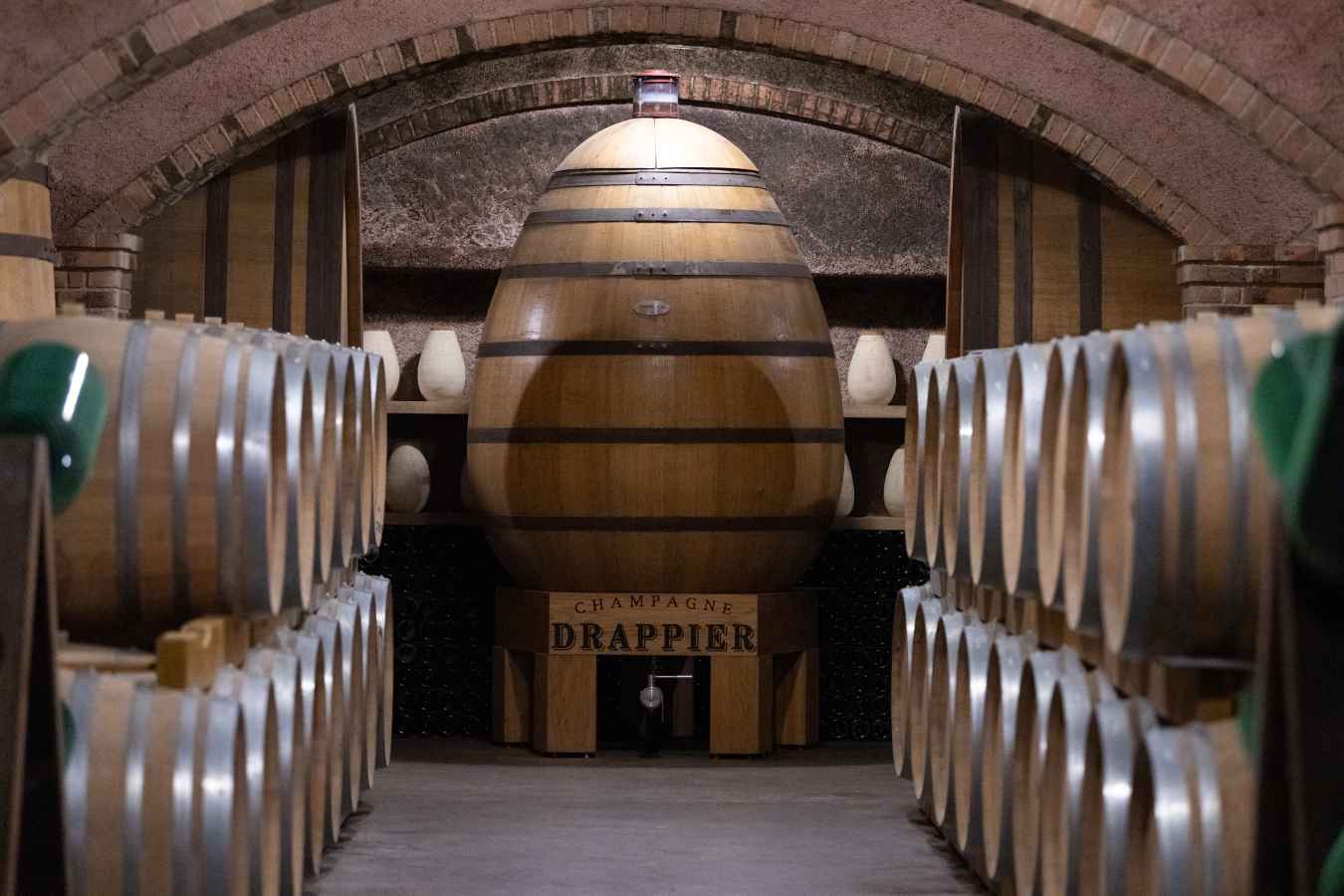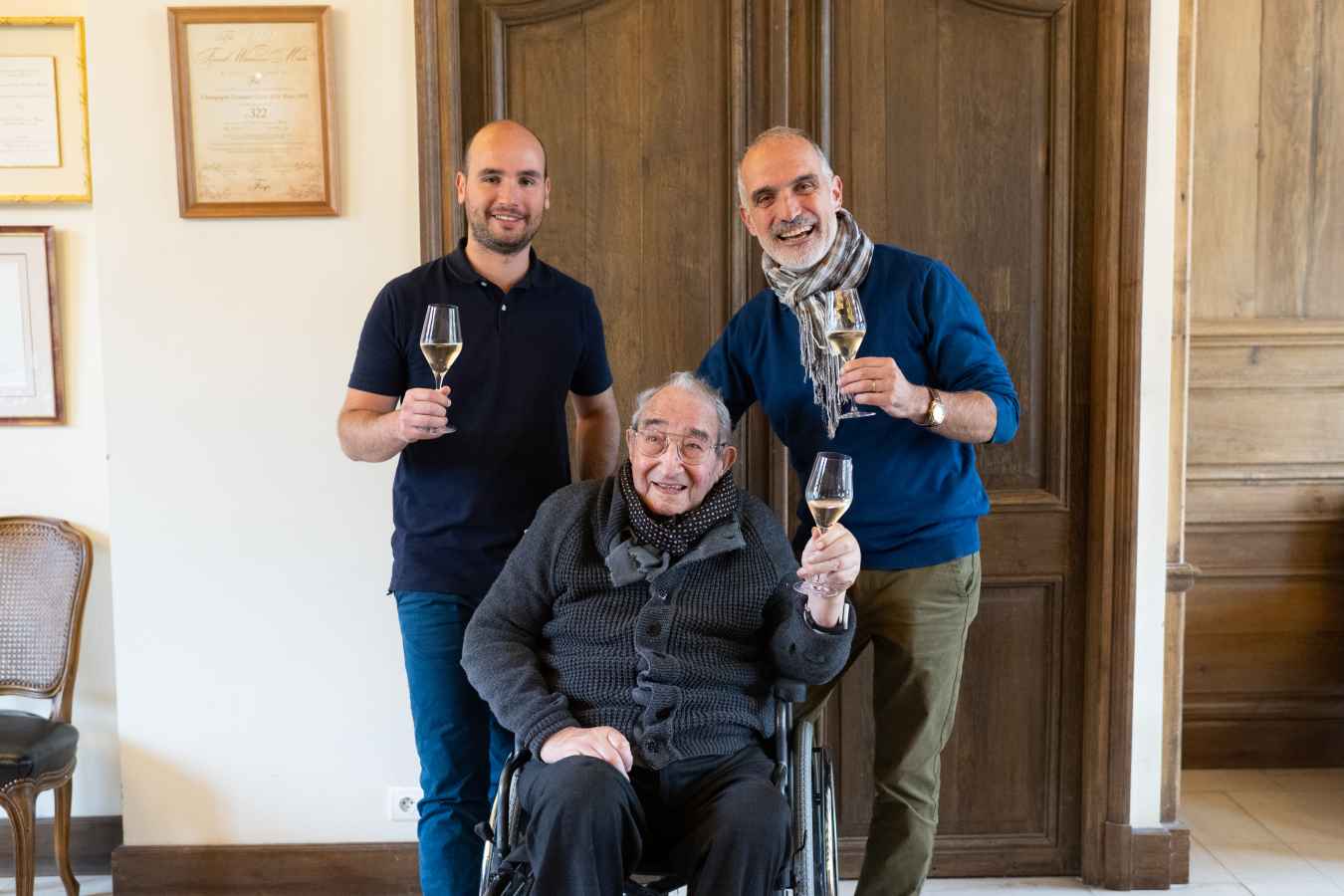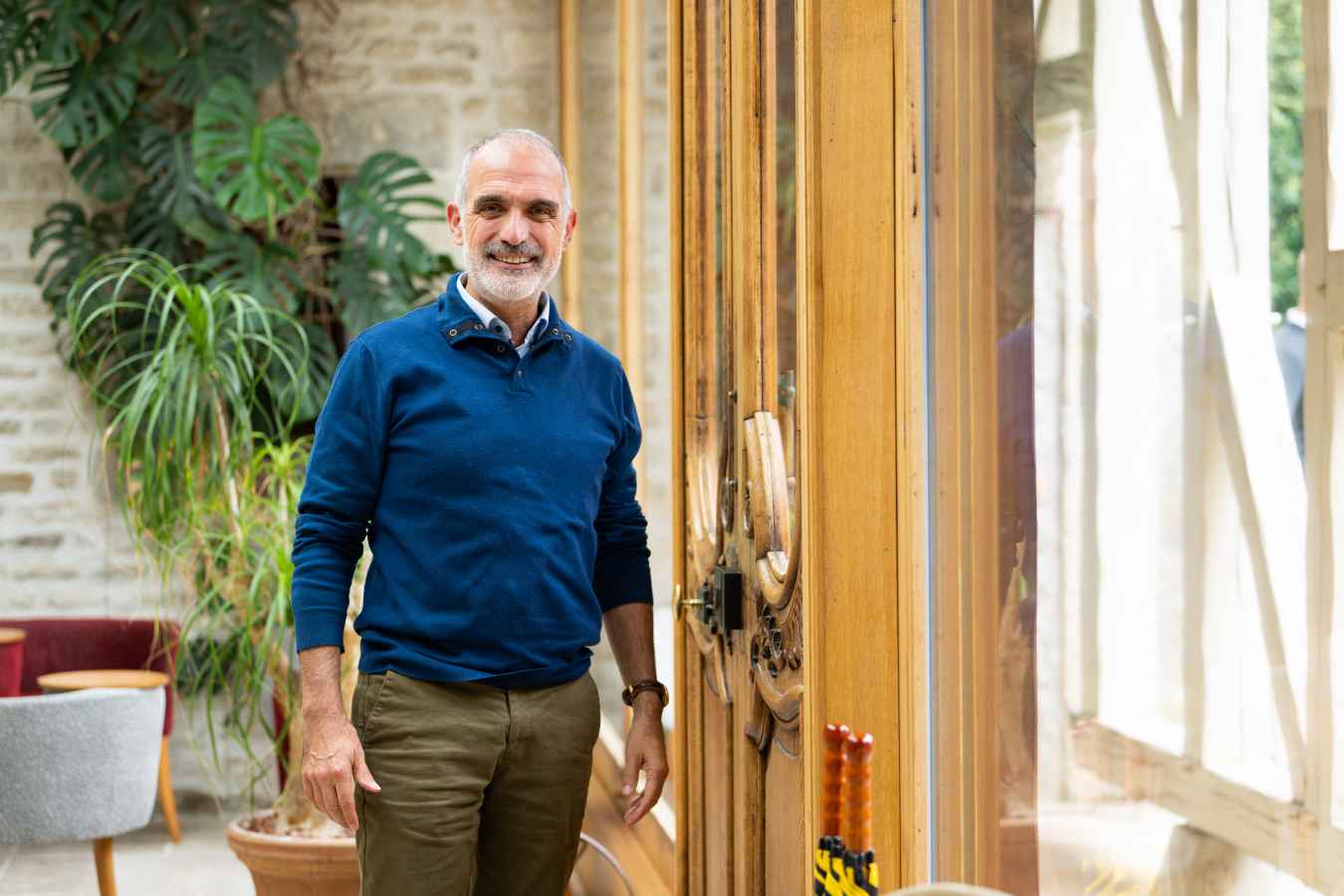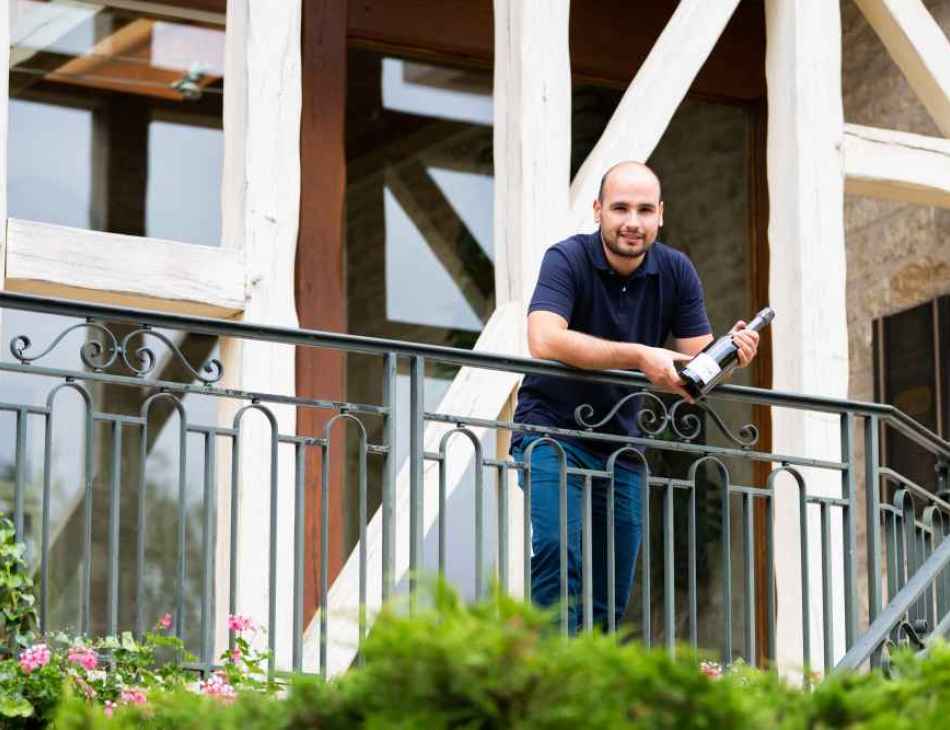Champagne Drappier - Part Two
Hugo Drappier
This is the second part of my article on Champagne Drappier. The first article can be read here.
I previously mentioned sustainability and to this extent, they still use 2 horses to plough a proportion of their vineyards, exactly as they would have decades ago. The horses are complimented by electric tractors. If horses were to be exclusively used, it would take 30 of them. This is not a nod to old times, there is a valid reason for still using them. The use of horses, rather than tractors, helps to reduce soil compaction, which is essential for maintaining healthy soil structure and promoting biodiversity. Horses are lighter and gentler on the land, allowing the roots of the vines to breathe and the microorganisms in the soil to thrive. This practice is especially useful in Drappier’s organically farmed plots, where they emphasise low-impact farming methods.
Champagne Drappier's meticulous care for its vineyards has led to a significant achievement: what they believe to be the largest certified organic vineyard in the entire Champagne region. This certification is the result of their years of dedication to sustainable and eco-friendly farming practices, including the elimination of synthetic pesticides, herbicides, and chemical fertilisers. Drappier’s commitment to organic viticulture not only protects the natural environment but also promotes biodiversity, improves soil health, and contributes to the overall quality of the grapes.
Getting back to the dinner, we explored the sales dynamics between vintage and non-vintage Champagne and found that vintage often occupies a challenging middle ground. Consumers tend to gravitate toward either a standard bottle or a high-end, top-tier offering, leaving vintage Champagnes overlooked except by true enthusiasts. This is unfortunate, as vintage Champagnes possess a unique charm, capturing the essence of a specific time and place. They are also typically released only in exceptional years, ensuring remarkable quality.
It is worth mentioning the menu, which was as follows and exceptional:-
Poached Foie Gras Carpaccio
Snapshot of Bonito Broth Lum Condiments with Salt And Sweet and Sour
Wild Monkfish in 2 Cookings, Steamed Pointed Cabbage,
Crunchy Salad with Salicornia, Lemon Confit And Shellfish Emulsion
Crispy French Sweetbreads, Celery Leaf Confit with Tarragon Butter, Veal Juice with Sheep's Feet And Colonnata Bacon
Selection of Local Cheeses from the "Crèmerie Chaumontaise”.
Pear and Vanilla Entremet, And Other in Sorbet
Mignardises
And the accompanying Champagnes:-
Magnum Carte d'Or
Magnum Brut Nature Sans Souffre
Clarevallis
Perpétuité
Millisime Exception 2012
Denothèque 2004
Rosé de Saignée
There’s something magical about walking through a winery’s cellars, especially when they were carved out centuries ago. Drappier’s cellars, originally constructed by Cistercian monks in the 12th century, are no exception. As you wander through, you never quite know where each tunnel will lead or what treasures lie behind the small gated doors. I could not help but see 2 eggs-shaped barrels used for maturation at the back of one maturation room. These unique vessels, made from concrete, are gaining popularity in winemaking as they encourage natural convection currents within the barrel, meaning the wine continuously moves, promoting a more homogeneous ageing process. This movement helps integrate the lees (dead yeast cells) more effectively, adding richness and a creamy mouthfeel to the Champagne without needing to stir the wine manually.
Scattered through the cellars are small gated coves, guarding wines that are old and precious, some perhaps destined never to be opened. Others, layered with ancient dust or even barnacles (more about that shortly) are maturing patiently until the time comes for their enjoyment. This day does eventually arrive, as these ancient vintages, some from the Drappiers’ private collection, are bought retrieved and served. We were lucky enough to sample several of these the following day, after yet another expertly guided tasting. What was described as a "light lunch," prepared by Michel’s wife, turned out to be anything but - an indulgent feast of fricassee with rice, followed by an apple tart and, of course, the essential cheese course.
It was the Champagne that stole the show, as we were treated to quite an unbelievable selection. Setting the tone was their Grande Sendrée Abyss which has been aged under the sea, and served with the standard Grande Sendrée as a comparison. Wrapped in a map and complete with barnacles on the bottle, it was pure theatre seeing Hugo open it. Not least because André Drappier, Michels’s 97-year-old father, had made a special visit to join us for lunch. This was a special moment, seeing 3 generations of the family together. You may picture such a historic family as being rather aloof, but this couldn’t be farther from the truth. They laughed, joked and exchanged banter between them. It was a wonderful family dynamic.
For the Grande Sendrée Abyss, Drappier rents a small patch of ocean near Brittany and ages their champagne at a depth of 35m. The idea for underwater ageing came from the discovery of shipwrecked Champagne bottles that had been submerged for decades but remained in excellent condition. Inspired by this, Drappier sought to experiment with the effects of ageing their Champagne in the sea.
It is as cold and dark as a cellar under the ocean. The pressure inside the bottles is a little higher than the sea (6 atoms) which avoids leakage. Approximately 2000 bottles are aged in cages for around a year. Divers regularly go down to check them as the cages they are housed in do get turned over in the currents. It is not all plain sailing though - it does produce some problems. Salt corrodes the muzzle causing them to rust so these must be replaced under water - not an easy task. The resulting wine shares the same DNA, but I picked up more saline notes. I would love to taste it blind to see if I could still detect this.
What was meant to be a “simple lunch” turned into one of the most fascinating wine experiences I’ve ever had. Michel, with his characteristic generosity, brought out several bottles from his private collection for us to taste, elevating the occasion beyond expectation. Throughout the previous evening and into that day, Michel would periodically ask Hugo if certain wines were on the lineup; and if Hugo said no, Michel promptly insisted we include them. One of the highlights was the rare opportunity to compare the 2012 and 2009 Grande Sendrée side by side - a comparison that hadn’t been done in five years.
The 2012 was full of ripe orchard fruits, such as apples and pears, complemented by citrus zest and delicate floral notes, with dried apricots and quince on the palate. The older 2009 by contrast had more peach and candied citrus on the nose with the expected brioche in terms of flavour with nuts, even damsons on the palate.
We then moved on to savour the 2006 and 2005 Grande Sendrée, both of which showcased a remarkable minerality, beautifully complemented by vibrant citrus notes, marzipan, and the warm, rich aroma of toasted brioche. However, the highlight was undoubtedly the 1999 vintage, which Michel hadn’t tasted in over 15 years, and it marked Hugo’s first experience with this particular vintage. Though it had lost its effervescence, the wine remained thoroughly drinkable and enjoyable, revealing how gracefully these Champagnes can evolve over time, with their depth of flavour and complexity still impressively intact. This rare tasting highlighted the extraordinary ageing potential of Grande Sendree.
It was an extraordinary experience, one I will never forget. The Drappier family’s warmth, hospitality, and down-to-earth nature truly touched me, and they have won a special place in my heart. Without a doubt, I will be reaching for their Champagne again in the future. Among the "regular" bottles, the Drappier Rosé de Saignée Brut stood out as my favourite - it was simply exquisite. I highly recommend stocking up on a few bottles for the festive season, or even sooner, to enjoy this exceptional Champagne.

